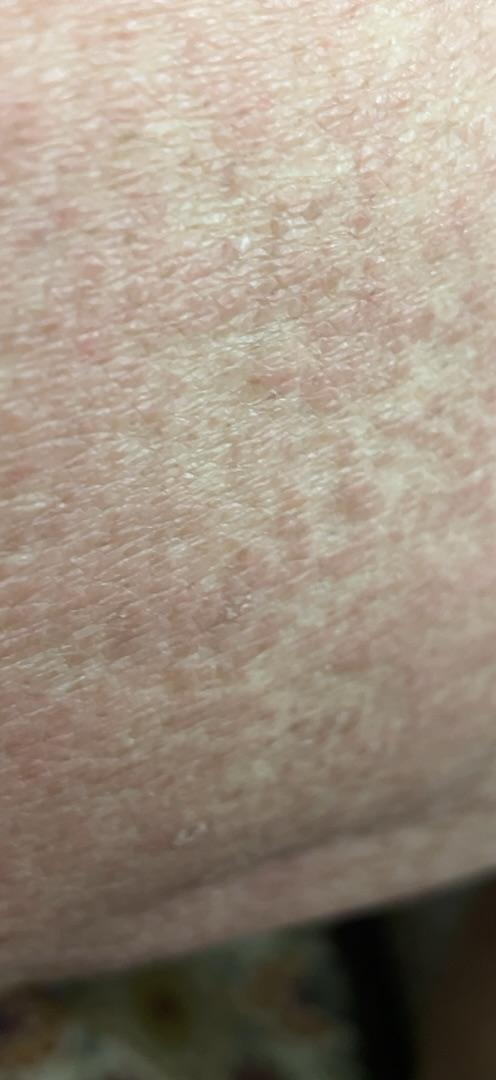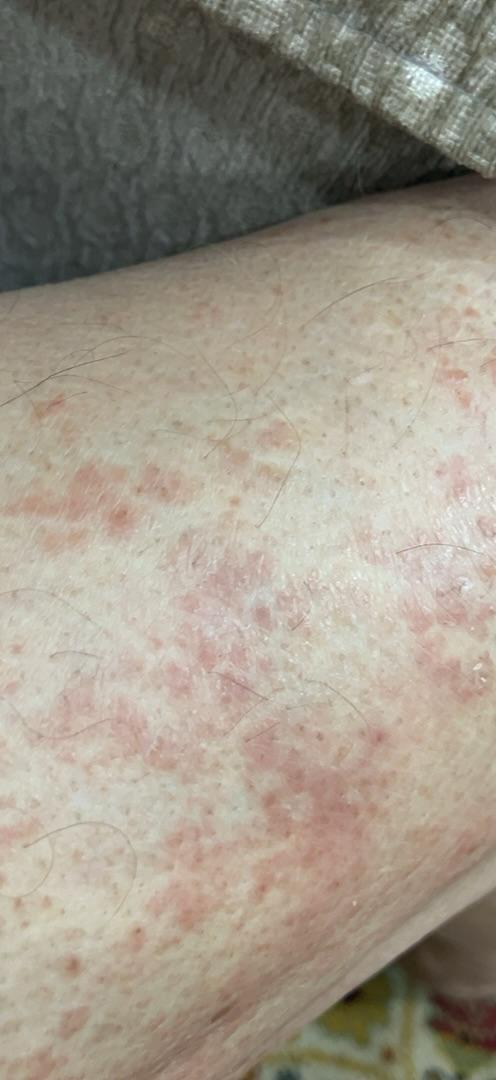Sunday Poster Session
Category: IBD
P1274 - Leukocytoclastic Vasculitis in a Patient with Crohn’s Disease on Anti-TNF-α Therapy
Sunday, October 26, 2025
3:30 PM - 7:00 PM PDT
Location: Exhibit Hall

Patrick Ryan, MD
Indiana University School of Medicine
Indianapolis, IN
Presenting Author(s)
Patrick Ryan, MD1, Satya Kurada, MD2, Monika Fischer, MD, MS3
1Indiana University School of Medicine, Indianapolis, IN; 2Indiana University School of Medicine, Indianapolus, IN; 3Indiana University-Purdue University Indianapolis, Indianapolis, IN
Introduction: Anti-TNF-α therapies are common agents used in the treatment of IBD. They are, however, associated with adverse effects (AEs), including infections, arthropathies, and rashes. Clinicians must also remain vigilant for a wider range of additional, lesser-known AEs in the management of IBD patients on anti-TNF-α agents.
Case Description/
Methods: An 81-year-old male living in India with stricturing ileocolonic and fistulizing perianal Crohn disease controlled on anti-TNF-α therapy presented with a new-onset rash. 18 months prior, the patient had been diagnosed with IBD and started on adalimumab. Dermatologic exam showed diffuse, bilateral lower extremity erythematous papules and coalescing plaques which were palpable and non-blanching (Figures 1 & 2). Skin biopsy was undertaken which revealed small-vessel neutrophilic vasculitis with red cell extravasation, consistent with leukocytoclastic vasculitis (LCV). The patient’s adalimumab therapy was discontinued, and a transition was planned to anti-IL-23 therapy with risankizumab, methotrexate and topical triamcinolone acetonide.
Discussion: LCV is a rare small-vessel vasculitis mediated by immune complex deposition in postcapillary venules. It has been associated with a variety of conditions including infections, autoimmune processes, medications, and malignancies. LCV often presents with palpable purpura predominantly in dependent locations, such as the lower extremities, and can be associated with fever and renal involvement. Evaluation consists of thorough history-taking, medication review, and laboratory studies to screen for contributing pathologies and internal organ involvement. An essential step in LCV evaluation is skin biopsy to confirm the diagnosis and differentiate the condition from other rashes. Management involves addressing any underlying process. In cases of anti-TNF-α-associated LCV discontinuation of the medication is recommended, as well as a short course of steroids. Severe or multi-organ involvement requires more aggressive immunosuppressive therapy. While re-challenging with another anti-TNF-α therapy may be considered, the preferred approach for ongoing IBD management in these patients is to switch to a non-TNF-α biologic. Although not as common as other dermatologic AEs of biologic therapies, clinicians should keep LCV on their differential diagnosis when evaluating rashes in IBD patients to promptly identify and implement appropriate management for these cases.

Figure: Clinical image of rash on patient's right lower extremity.

Figure: Clinical image of rash on patient's left lower extremity
Disclosures:
Patrick Ryan indicated no relevant financial relationships.
Satya Kurada: Bristol Myers Squibb – Advisory Committee/Board Member.
Monika Fischer: abbvie – Advisory Committee/Board Member. Criscot – DSMB chair. Eli Lilly – Advisor or Review Panel Member. Ferring – Advisory Committee/Board Member. Johnson and Johnson – Advisor or Review Panel Member, Speakers Bureau. seres – Advisor or Review Panel Member, Advisory Committee/Board Member.
Patrick Ryan, MD1, Satya Kurada, MD2, Monika Fischer, MD, MS3. P1274 - Leukocytoclastic Vasculitis in a Patient with Crohn’s Disease on Anti-TNF-α Therapy, ACG 2025 Annual Scientific Meeting Abstracts. Phoenix, AZ: American College of Gastroenterology.
1Indiana University School of Medicine, Indianapolis, IN; 2Indiana University School of Medicine, Indianapolus, IN; 3Indiana University-Purdue University Indianapolis, Indianapolis, IN
Introduction: Anti-TNF-α therapies are common agents used in the treatment of IBD. They are, however, associated with adverse effects (AEs), including infections, arthropathies, and rashes. Clinicians must also remain vigilant for a wider range of additional, lesser-known AEs in the management of IBD patients on anti-TNF-α agents.
Case Description/
Methods: An 81-year-old male living in India with stricturing ileocolonic and fistulizing perianal Crohn disease controlled on anti-TNF-α therapy presented with a new-onset rash. 18 months prior, the patient had been diagnosed with IBD and started on adalimumab. Dermatologic exam showed diffuse, bilateral lower extremity erythematous papules and coalescing plaques which were palpable and non-blanching (Figures 1 & 2). Skin biopsy was undertaken which revealed small-vessel neutrophilic vasculitis with red cell extravasation, consistent with leukocytoclastic vasculitis (LCV). The patient’s adalimumab therapy was discontinued, and a transition was planned to anti-IL-23 therapy with risankizumab, methotrexate and topical triamcinolone acetonide.
Discussion: LCV is a rare small-vessel vasculitis mediated by immune complex deposition in postcapillary venules. It has been associated with a variety of conditions including infections, autoimmune processes, medications, and malignancies. LCV often presents with palpable purpura predominantly in dependent locations, such as the lower extremities, and can be associated with fever and renal involvement. Evaluation consists of thorough history-taking, medication review, and laboratory studies to screen for contributing pathologies and internal organ involvement. An essential step in LCV evaluation is skin biopsy to confirm the diagnosis and differentiate the condition from other rashes. Management involves addressing any underlying process. In cases of anti-TNF-α-associated LCV discontinuation of the medication is recommended, as well as a short course of steroids. Severe or multi-organ involvement requires more aggressive immunosuppressive therapy. While re-challenging with another anti-TNF-α therapy may be considered, the preferred approach for ongoing IBD management in these patients is to switch to a non-TNF-α biologic. Although not as common as other dermatologic AEs of biologic therapies, clinicians should keep LCV on their differential diagnosis when evaluating rashes in IBD patients to promptly identify and implement appropriate management for these cases.

Figure: Clinical image of rash on patient's right lower extremity.

Figure: Clinical image of rash on patient's left lower extremity
Disclosures:
Patrick Ryan indicated no relevant financial relationships.
Satya Kurada: Bristol Myers Squibb – Advisory Committee/Board Member.
Monika Fischer: abbvie – Advisory Committee/Board Member. Criscot – DSMB chair. Eli Lilly – Advisor or Review Panel Member. Ferring – Advisory Committee/Board Member. Johnson and Johnson – Advisor or Review Panel Member, Speakers Bureau. seres – Advisor or Review Panel Member, Advisory Committee/Board Member.
Patrick Ryan, MD1, Satya Kurada, MD2, Monika Fischer, MD, MS3. P1274 - Leukocytoclastic Vasculitis in a Patient with Crohn’s Disease on Anti-TNF-α Therapy, ACG 2025 Annual Scientific Meeting Abstracts. Phoenix, AZ: American College of Gastroenterology.

